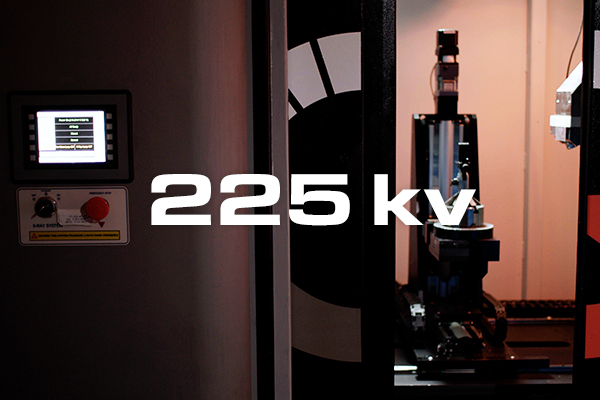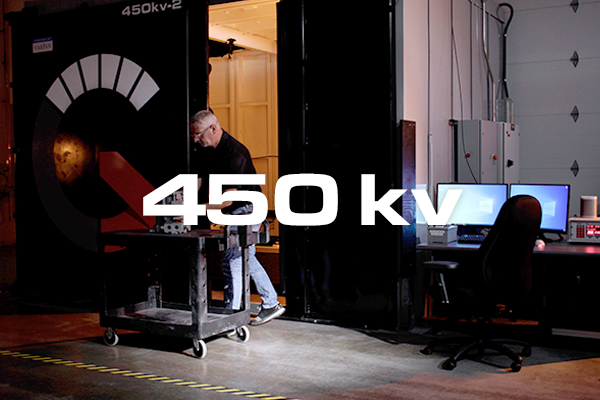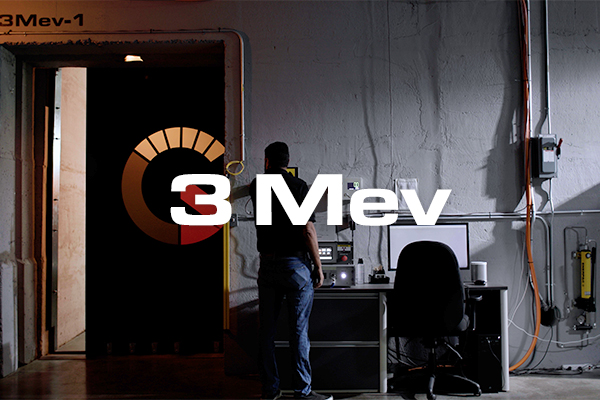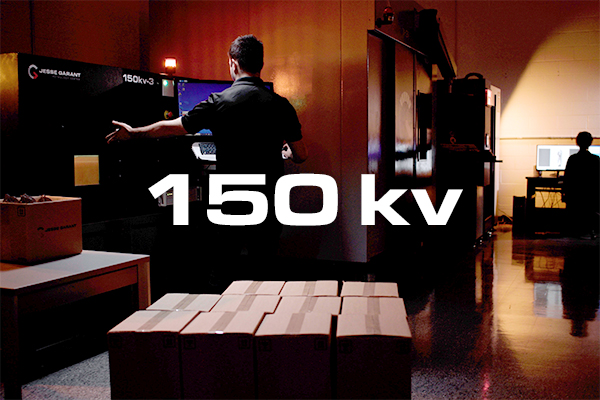First Article Inspection - CT Scanning Services
Part Inspection Lab
We help companies inspect difficult measurements for first article inspection
using our Metrology based
CT scanning services
FIRST ARTICLE INSPECTION
Most of our clients identify internal imaging with a personal experience in the medical industry. However, contrary to popular belief our CT Scan services are found to be highly beneficial for inspection of industrial parts and assemblies.
Our advanced Industrial (Computed Tomography) CT Scanning services are able to aid manufacturers when inspecting difficult to measure part features with micro measurement variations from the design intent. Furthermore the metrology services provided are an ideal fit for first article inspection and dimensional PPAP reporting requirements.




FIRST ARTICLE INSPECTION
CT SCANNING SERVICES
Before a part is scanned, a measurement program is developed around a supplied CAD model from a GD&T part print. The measurement plan developed can be for all of the GD&T part print points or predetermined points selected by the client.
Once a part has been scanned, a Part to CAD comparison is first performed and aligned by the part print datums. The developed measurement plan is then executed. Results for every programmed GD&T point are provided in an easy to read chart or in excel format. The first article inspection results show the listed dimension, tolerance, deviation from actual, and value out of tolerance. Within the program, the customer is also able to go to any dimensioned feature and see how the dimension was taken.
BENEFITS
With first article inspection using external and internal part features, you can:
- Perfect fit for PPAP or AS9102 form 3 reporting requirements
- Once a measurement plan has been developed and the part has been scanned, tens, hundreds, or thousands of part print points can be dimensioned instantly.
- Complex GD&T callouts such as profile, run out, MMC, LMC, and concentricity can easily be computed
- Complex parts no longer have to be cut up to perform full part print layouts
- Multiple parts can be dimensionally validated faster than traditional inspection methods for a first article PPAP part run
Need more info on first article inspection?
Review our knowledge section below.
First Article Inspection (Overview)
First Article Inspection overview
Before the manufacturing process begins, industry requirements suggest a detailed verification and comparison of product design vs. production result, known as First Article Inspection (FAI). Frequently used in the aerospace, medical device and automotive industries, FAI reports are becoming a standard process to ensure quality and consistency of the final product. Although conducting FAI can be complex, technological advancements and user friendly software’s have allowed users to implement and execute this process quickly and accurately.
What is First Article Inspection?
FAI reports are developed on all new products that are representative of the first production run.
What is the purpose of FAI?
The purpose of a FAI report include the following:
- The FAI report provides a guideline to provide objective confirmation that all engineering design and specification requirements are correctly understood, accounted for, verified and documented.
- Ensure the production process is reliable, repeatable and consistent
- Develops a clear understanding and communication outlet between buyer and supplier.
- Verify the accuracy of drawings, ensuring that all changes made to part designs are accounted for
- Validate all tooling used to produce a part, ensuring the tools ability to produce parts at certain specifications
- Ensure manufacturing process is capable and can meet the needs of production
When is FAI report necessary?
FAI reports are necessary when one of the following occur:
- A change in design which can potentially affect fit, form or function
- A change in manufacturing source, process, inspection method, location of manufacturer, tooling or materials
- A change to a different media program that can potentially affect fit, form or function
- Production of this part has not been executed for two years or more (or as specified by customer)
FAI Benefits
Before going into production of parts, FAI reports can be useful in determining whether a manufacturing process is capable of producing parts consistently within design parameters. Furthermore, FAI reports provide structure between customer and supplier for understanding and verifying project requirements. FAI also assists customer and supplier avoid or resolve miscommunication. This process also ensures the use of the right materials and tools, overall providing an effective initiative for expected results for production.
Full FAI vs. Partial FAI
A full FAI requires that all fields must be accounted for and filled out. With a partial FAI report, only the affected fields on the FAI form shall be filled out. In regards to any outstanding fields, they may be filled out at a later date or using previous data, given that it applies to the exact characteristics of duplicate parts produced by the same manufacturing process.
FAI Planning
Before the first production run parts, many factors must be accounted for in order to execute FAI planning, which typically include the following:
Records for the manufacturing process – organize activities to be executed throughout FAI process and responsible suppliers/organizations for each
Ensure approved material sources, laboratory and applicable manufacturing, planning, routing and purchasing are according to specifications
Ensure every design characteristic specification is identified and met, with documentation detailing results
Gauge, tooling are qualified/calibrated and traceable
FAI Documentation
The supplier has the responsibility to fill out the documentation for FAI reports subject to the following forms:
Form 1: Part number accountability – this form is used to review part numbers and associated FAI accordingly
Form 2: Product accountability – used for raw materials, specifications, processes and functional tests
Form 3: Characteristic accountability – used to summarize specific design characteristics.
PPAP
Production Part Approval Process (PPAP) overview
In order to provide consistency and stability, suppliers are now required to submit a PPAP report for assessment. Although the process may be complex, features of a PPAP report are commonly outsourced, to attain consistent part data. For example, dimensional analysis are commonly outsourced to an inspection lab. This helps users maintain the integrity of the PPAP report and ensure accurate analysis.
What is PPAP?
What is the purpose of a PPAP?
PPAP is used as a risk classification and qualification process which is used to determine whether a production run will produce parts with consistency and repeatability. PPAP also allows for a clear communication outlet between a customer and supplier. The purpose of a PPAP include the following:
A PPAP provides confirmation that the customer and supplier have clear understanding in regards to engineering design specifications and requirements, which can be met by the supplier.
A PPAP also validates that the manufacturing process has the potential to produce the part consistently, meeting all design requirements during production, at the quoted production rate.
PPAP process confirms that a supplier can meet the manufacturing and quality requirements of the parts being produced.
PPAP Application
A PPAP report is required to be filled out by the following suppliers (automotive industry):
- Bulk Material: PPAP only required if requested by customer
- Production Material: PPAP required unless waived by customer
- Service Parts: PPAP required unless waived by customer
- Production Parts: PPAP always required
When is PPAP necessary?
A PPAP report is necessary when one of the following occur, subject to AIAG PPAP manual:
- New part
- Engineering changes
- Correction to discrepancy in previous submission
- Design or process change
- Change in source of subcontracted material or services
- Transfer or rearrangement of tooling & equipment
- Parts produced at a new or additional location
PPAP Benefits
The main benefit that PPAP reports provide customers is that the process allows users to avoid the use or distribution of unapproved parts from the production line. A PPAP report also makes it very easy for customers to detect issues or defects early in the production process, inevitably reducing time and saving costs. Moreover, the PPAP process helps suppliers and customer relationship by maintaining and withholding the integrity or design parameters for production parts as well as assisting customers to review and handle supplier changes more effectively.
PPAP Process
The PPAP process involves a set of instructions for setting up the approval process for production parts. In the automotive industry, there are 19 distinct elements which need to be taken into account for the approval of parts. Furthermore, depending on the PPAP submission level highlighted by the customer, the supplier must provide a part submission warrant (PSW) along with supporting data for each of the 19 elements listed. Initial Sample Inspection Report (ISIR), Sample parts, documentation and warrants are assessed, if the PPAP report is not approved, the process is repeated until all conditions are met.
PPAP – Required Elements (automotive)
- Design Records – A printed copy of the drawing
- Authorized Engineering Change Documents – Document entails thorough description of change
- Engineering Approval
- DFMEA – Design Failure Mode and Effect Analysis – signed by supplier and customer
- Process Flow Diagram – Entails all steps in fabrications process
- PFMEA – Process Failure Mode and Effect Analysis – signed by both supplier and customer
- Control Plan – Signed by both supplier and customer
- Measurement System Analysis Studies
- Dimensional analysis – Review dimensions noted on ballooned drawing for ok/not ok analysis
- Material Performance Review – summary of test(s) performed on the part
- Initial Sample Inspection – inspection before development of prototype
- Initial Process Studies – statistical process control charts
- Qualified Laboratory Documentation – All certification of labs that performed tests on parts
- Appearance Approval Report (AAR) – Appearance Approval Inspection signed by supplier & customer
- Sample Part – A sample from initial production run
- Master Sample – Signed off by supplier and customer – sample parts used to train
- Checking Aids
- Customer Specific/Compliance record
- Part Submission Warrant (PSW) – Summary of PPAP
PPAP – Submission Levels
There are five different submission levels for PPAP reports. In the automotive industry, level 3 is the default submission level. A supplier of bulk material can use level 1 as the default submission level, however, the customer has the responsibility of identifying the submission level for the supplier.
Level 1: PSW submission warrant only submitted to the customer
Level 2: PSW with product samples and limited supporting data
Level 3: PSW with product samples and complete supporting data
Level 4: PSW and other requirements as defined by the customer
Level 5: PSW with product samples and complete supporting data available for review at the supplier’s manufacturing location
AS9102
AS9102 overview
In efforts to improve quality, the International Aerospace Quality Group (IAQG) was founded in 1998 by the Aerospace industry. To provide direction, improve process and organize documentation, AS9102 standard was established for First Article Inspection (FAI) reports for the Aerospace industry.
What is AS9102?
AS9102 is a standard which highlights documentation requirements for First Article Inspection (FAI) reports intended for the Aerospace industry. The SAE Aerospace Standard (AS) released AS9102 standard for FAI reports, which was sponsored by IAQG and developed with the assistance of engineers and developers.
Purpose of AS9102
As defined by SAE, a FAI report is developed to provide objective evidence that all engineering design specification requirements are properly understood, accounted for, verified and documented. In efforts to enhance the FAI reports, AS9102 established documentation requirements. The intent of the standard as per SAE, is to provide a quality record via FAI report, of the supplier and customer for the following purposes:
- Review of accountability and planning
- Performing periodic surveillance and audits to verify conformance
- Evaluating root cause and corrective action for non-conformance
- Assist with problem investigations
Performing FAI – AS9102
A first article inspection is usually conducted with the first production run parts, defined in the AS9102 standard as, “the first group of one or more parts that are the result of a planned process designed to be used for future production of these same parts.” Prototype parts or parts developed using different methods are not considered first production run parts. The sample of parts is used for comparison, usually against a blue print. All specified measurements are taken into account and compared accordingly, to determine whether each dimension meets the specified requirements. All dimensions listed on the print must be accounted for the in the FAI report.
AS9102 Documentation and Application
The FAI reports subject to AS9102 standard require the submission of three distinct forms, assisting in the validation of new processes. The following are the form submission to be completed:
Form 1: Part number accountability – this form is used to review part numbers and associated FAI accordingly àassists in confirming dependability when introducing new parts
Form 2: Product accountability – used for raw materials, specifications, processes and functional tests & assists in repeatability during production
Form 3: Characteristic accountability – summarize design characteristics and assists in validating process
AS9102 Requirements
AS9102 Standard applies to assemblies, sub-assemblies and detail parts including castings and forgings, for all parties that are responsible for producing design characteristics of the part. There are three distinct elements that are noted for the AS9102 process for determining the requirement of submission:
- (R) – When R is listed in a given field on any of the forms, filling this field is required.
- (CR) – When CR is listed in a given field on any of the forms, filling this field is conditionally required.
- (O) – When O is listed in a given field on any of the forms, filling this field is optional.
Common reasons for FAI – AS9102 Rejection
Subject to IAQG, the following tend to be reasons why FAI reports may not always be accepted, or where common issues arise:
- Forms not completed properly
- Engineering requirements not understood
- FAI training & processes not defined or effective
- 9102 flow-down and oversight inconsistent or ineffective
GD&T
Geometric Dimensioning & Tolerancing (GD&T) overview
In order to develop a method of effective communication, standards have been put into place related to the practice of GD&T. In North America, ASME Y14.5-2009 (most updated version) is the most commonly used standard, while ISO 1101 is more prevalent in Europe. Regardless of the industry, it is common for users to outsource GD&T applications due to the ease of implementation and retrieval of accurate part data.
What is GD&T?
Geometric Dimensioning & Tolerancing (GD&T) is a language representative of engineering drawings to classify deviations and tolerance of part measurements and geometric analysis. It is an efficient way of communicating measurement conditions and specification of a part. Consisting of symbols, this language is used to define the allowable variations subject to theoretically ideal or perfect geometry.
What is the purpose of GD&T?
A language developed to assist with the understanding of dimensional requirements, GD&T can be utilized effectively in the following areas:
- Detail the engineering specifications and requirements of a part
- Assist in ensuring that the part is developed in the anticipated form
- Able to improve quality and reduce costs of produced parts
What are the benefits of GD&T?
Implementing GD&T within the manufacturing and inspection process has many benefits, including:
Replaces details described in drawings of complex geometry components with symbolic language, to precisely describe manufacturing design and inspection conditions
Is a standard utilized across the world that increases the ability to communicate design specifications
Flawlessly defines the engineering intent of parts
When is GD&T required?
GD&T should be implemented when the design specifications of a part are critical to its function or consists of complex geometry. GD&T is commonly implemented when a manufacturer is simply looking to ease the process of defining and evaluating part tolerances. When a common origin reference point is to be determined, a GD&T is useful in defining such requirements.
ASME Y14.5
ASME Y14.5 overview
Geometric measurement and tolerancing (GD&T) is a universal practice for communicating the design, function and engineering intent of a part. ASME Y14.5 is a standard developed as a guideline and direction for the language of GD&T. ASME Y14.5 GD&T is used commonly across automotive, aerospace, electronics and manufacturing industries.
What is the purpose of ASME Y14.5?
ASME Y14.5 establishes the requirements, use and understanding of geometric dimensioning and tolerancing. The purpose of this standard is to identify the current industry needs and provide a means of communicating drawing objective of project specifications.
Application of this standard within GD&T allows for precise communication during the manufacturing process in order to improve quality and ensure consistency. Distinct symbols, terminology and application of each are highlighted and detailed throughout the standard.The ASME Y14.5 is similar in detailing dimensional requirements as the ISO 1101(e) -2004 series, which is more prevalent in Europe.
Evolution of ASME Y14.5
The revision of ASME Y14.5M-1994 has been conducted to reflect new technologically advanced methods of manufacturing and present day applications. The most recent updated version of the standard is known as ASME Y14.5-2009. The “M” in ASME Y14.5M-1994 was dropped as its purpose was to account for the “metric compatibility” of the standard which is no longer relevant. Although the fundamental concepts of dimensioning have not altered, the updated standard is easier to understand. The following is a brief overview of changes in the updates of the standard:
- Concept feature of size
- Datum reference and degrees of freedom
- Composite position tolerances
- Non-Uniform zone profile
- Surface boundaries & axis method of interpretation
- Profile tolerances
- Symbols & modifier tools
- Structural changes (formatting for better visual interpretation and readability)
- Terminology/Definition changes
Advantages of utilizing the ASME Y14.5 standard
Implementing a universal standard to communicate dimensional requirements unifies different organizations and industries, assisting in understanding and comprehending engineering intent of a project. ASME Y14.5 defines different terminology and uses symbols to lead a concise and accurate form of communication. For example, ASME Y14.5 can assist in communicating specified dimensions or “datums” on a part project. Ultimately, if ASME Y14.5 GD&T standard is applied correctly, it will allow a company to improve communication, save on manufacturing costs and make the quality control process easier by simplifying inspection.
GD&T Symbols
GD&T Symbols overview
Geometric Dimensioning & Tolerancing (GD&T) is a language representative of engineering drawings to classify deviations and tolerance of part measurements and geometric analysis. It is an efficient way of communicating measurement conditions and specification of a part. Consisting of symbols, this language is used to define the allowable variations from theoretically ideal geometry.
GD&T Symbols & Terms
Geometric characteristic symbols mentioned in the ASME Y14.5 have been distributed in accordance with the type of application, tolerance, characteristic and the accompanying symbol, to provide user friendly layout and ease of understanding.There are three types of applications including “individual features”, “individual or related features” and “related features”.
Within the ASME Y14.5 standard, each application is broken down into sections accordingly to identify the accompanying symbol. There are also five different types of tolerances highlighted to accompany different characteristics and symbols, to additionally provide ease of understanding.
The following is a brief description of symbol characteristics mentioned in ASME Y14.5-2009:
 Straightness – Identified with application of individual features. According to the ASME Y14.5 standard, straightness controls the form of a line on the surface of feature.
Straightness – Identified with application of individual features. According to the ASME Y14.5 standard, straightness controls the form of a line on the surface of feature.
 Flatness – Identified with application of individual features. According to the ASME Y14.5 standard, this symbol controls the flatness of surface.
Flatness – Identified with application of individual features. According to the ASME Y14.5 standard, this symbol controls the flatness of surface.
 Circularity – Identified with application of individual features. According to the ASME Y14.5 standard, circularity is used to describe the allowable variations to a true circle.
Circularity – Identified with application of individual features. According to the ASME Y14.5 standard, circularity is used to describe the allowable variations to a true circle.
 Cylindricity – Identified with application of individual features. According to the ASME Y14.5 standard, cylindricity is used to describe the allowable variation to a true cylinder.
Cylindricity – Identified with application of individual features. According to the ASME Y14.5 standard, cylindricity is used to describe the allowable variation to a true cylinder.
 Profile of a Line – Identified with application of individual or related features. According to the ASME Y14.5 standard, profile of a line controls size and form to cross sections of a feature.
Profile of a Line – Identified with application of individual or related features. According to the ASME Y14.5 standard, profile of a line controls size and form to cross sections of a feature.
 Profile of a Surface – Identified with application of individual or related features. According to the ASME Y14.5 standard, profile of a surface controls size and form to entire surface.
Profile of a Surface – Identified with application of individual or related features. According to the ASME Y14.5 standard, profile of a surface controls size and form to entire surface.
 Angularity – Identified with application of related features. According to the ASME Y14.5 standard, angularity controls orientation at a specific angle in accordance with primary datum of datum reference frame.
Angularity – Identified with application of related features. According to the ASME Y14.5 standard, angularity controls orientation at a specific angle in accordance with primary datum of datum reference frame.
 Perpendicularity – Identified with application of related features. According to the ASME Y14.5 standard, perpendicularity controls the orientation of a feature which is perpendicular to its primary datum of datum reference frame.
Perpendicularity – Identified with application of related features. According to the ASME Y14.5 standard, perpendicularity controls the orientation of a feature which is perpendicular to its primary datum of datum reference frame.
 Parallelism – Identified with application of related features. According to the ASME Y14.5 standard, parallelism controls orientation of a feature which is parallel to the primary datum of the datum reference frame.
Parallelism – Identified with application of related features. According to the ASME Y14.5 standard, parallelism controls orientation of a feature which is parallel to the primary datum of the datum reference frame.
 Position – Identified with application of related features. According to the ASME Y14.5 standard, position controls the location and orientation of a feature in accordance with datum reference frame.
Position – Identified with application of related features. According to the ASME Y14.5 standard, position controls the location and orientation of a feature in accordance with datum reference frame.
 Concentricity – Identified with application of related features. According to the ASME Y14.5 standard, this symbol controls concentricity of a surface to central datum.
Concentricity – Identified with application of related features. According to the ASME Y14.5 standard, this symbol controls concentricity of a surface to central datum.
 Symmetry – Identified with application of related features. According to the ASME Y14.5 standard, this symbol controls symmetry of two surfaced in accordance with central datum.
Symmetry – Identified with application of related features. According to the ASME Y14.5 standard, this symbol controls symmetry of two surfaced in accordance with central datum.
 Circular Runout – Identified with application of related features. According to the ASME Y14.5 standard, this symbol controls circularity of each circular portion of a surface in accordance to coaxial datum.
Circular Runout – Identified with application of related features. According to the ASME Y14.5 standard, this symbol controls circularity of each circular portion of a surface in accordance to coaxial datum.
 Total Runout – Identified with application of related features. According to the ASME Y14.5 standard, this symbol controls circularity, straightness, coaxility and taper of a cylindrical surface in accordance to coaxial datum.
Total Runout – Identified with application of related features. According to the ASME Y14.5 standard, this symbol controls circularity, straightness, coaxility and taper of a cylindrical surface in accordance to coaxial datum.









